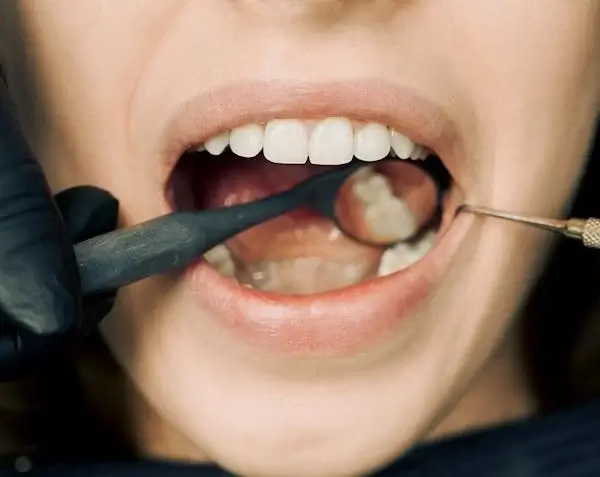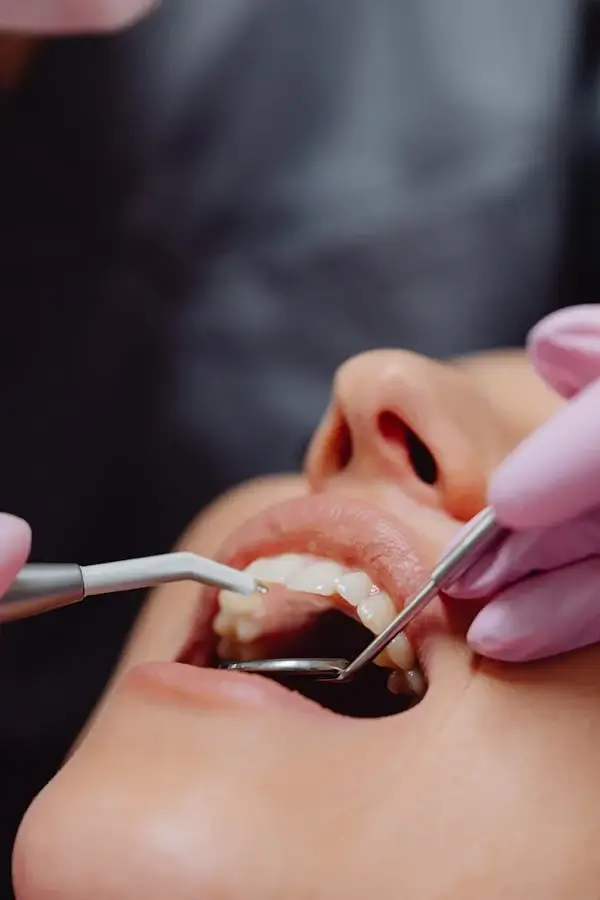
Have you ever felt a sudden zing between your teeth when sipping a cold drink? Or perhaps an unexplained discomfort when chewing?
These could be the signs of a cavity between teeth—a common but often overlooked dental issue. Interproximal cavities, as they’re medically known, can be tricky. Hidden between teeth, they quietly progress until pain or complications strike.
In this guide, we’ll walk you through everything you need to know: from causes and symptoms to treatment and prevention. We’ll also introduce you to Smile Line Dentistry, your go-to dental team in Livermore and Antioch, CA.
An interproximal cavity is decay that forms on the surfaces between two adjacent teeth. Since these areas are hard to reach and often neglected during brushing, they become breeding grounds for bacteria.
Unlike surface cavities (which you can often see or feel), interproximal cavities are tucked away. They’re only visible with X-rays or a detailed dental exam. That’s what makes them especially deceptive—and dangerous.
Understanding the "why" behind cavities is the first step to prevention.
Plaque is a sticky film of bacteria that constantly forms on your teeth. When not removed, it releases acids that erode enamel and settle into the tiny spaces between teeth.
Flossing isn’t just a dentist's suggestion—it’s a must. When you skip it, you're ignoring the very areas where interproximal cavities start.
Sugar feeds the bacteria in your mouth, while acidic foods wear down enamel. Together, they create the perfect storm for decay between teeth.
Saliva helps neutralize acids and rinse away food particles. When your mouth is dry—due to medication, age, or dehydration—your teeth become more vulnerable.
While cavities can affect anyone, certain factors put you at higher risk.
If your parents had a history of dental decay, you might too. Genetic predisposition can influence your tooth structure and saliva quality.
Brushing once a day or skipping flossing can lead to plaque buildup, especially in hard-to-reach spots.
When teeth are too close together, it's harder to clean between them—making cavities more likely.
Spotting a cavity early means simpler, less invasive treatment.
That sharp sting you feel while enjoying an ice cream cone? It could be the first sign of enamel erosion between teeth.
Intermittent pain, especially between specific teeth, may hint at hidden decay.
Even a faint shadow near your gum line can suggest something more serious beneath the surface.
Persistent bad breath—even after brushing—can point to trapped food or bacteria in a developing cavity.
If left untreated, early signs can evolve into serious dental problems.
A dull ache that lingers may indicate that the cavity has reached deeper into the tooth layers.
Discomfort when eating could suggest that decay has reached the dentin or nerve tissue.
Sometimes, the cavity becomes large enough to create a noticeable space—especially if two teeth drift apart.
This could mean the decay has irritated nearby gum tissue—putting your overall oral health at risk.
Detecting these cavities isn’t a guessing game—it’s a science.
X-rays allow dentists at Smile Line Dentistry to spot hidden decay between teeth that isn’t visible to the naked eye.
A skilled dentist may use special tools to gently probe between your teeth, checking for weak spots or tenderness.
You might notice tingling or zapping sensations when drinking something very cold or hot.
Often, the discomfort isn't constant—it's sneaky, fading and returning without clear cause.
Cavities between teeth often don’t show symptoms until they’re well underway. Like termites in a house, they do their damage before you ever see them.
Pain usually arises only after the cavity reaches the inner pulp—where nerves reside.
Letting a small cavity fester can open the floodgates to major dental problems.
Decay doesn’t stay put—it can easily infect neighboring teeth.
When the pulp becomes infected, the tooth may need a root canal—or worse, extraction.
Severe decay can spread to the gums and underlying bone—leading to periodontal disease.
You hold the power to protect your teeth—every day.
Use a soft-bristled brush and floss daily, making sure to curve the floss around each tooth.
These tools offer a deeper clean between tight spaces, especially for those with braces or crowded teeth.
Reducing sugary snacks and sipping water instead of soda can significantly lower your cavity risk.
Topical fluoride can help remineralize enamel in the earliest stages of decay.
If the cavity has progressed, your dentist may recommend a filling or inlay to restore the tooth’s structure.
For more advanced cases, a crown or root canal may be needed to save the tooth.
Ideally, schedule a checkup every six months—more frequently if you're at higher risk.
Dentists can spot early problems and clean the places your brush can’t reach.
Avoid hard foods for a few hours. Mild sensitivity is normal but should fade within days.
Looking for outstanding dental care in Livermore or Antioch, CA? Smile Line Dentistry provides a personalized, high-tech experience across two convenient locations: 2545 East Ave Suite A, Livermore, CA 94550 (adjacent to Valley Care Hospital), and a state-of-the-art facility in Antioch.
Our Livermore office welcomes you on Tuesdays from 9 AM to 7 PM, Wednesdays and Thursdays from 10 AM to 6 PM, Saturdays from 10 AM to 6 PM, and Sundays from 10 AM to 4 PM; we are closed on Fridays. Experience the difference at Smile Line Dentistry.
Call us today to book your visit – we look forward to seeing you! For the Antioch location's hours, please contact us directly.

The signs of a cavity between teeth may not be loud, but they’re certainly significant. Left undetected, these sneaky invaders can cause severe damage—not just to your teeth, but to your overall oral health.
With the right knowledge, daily habits, and trusted dental support, you can stay ahead of the game. Prevention, early detection, and professional care from trusted providers like Smile Line Dentistry ensure your smile stays healthy and strong.
Usually not. These cavities form between teeth and are often invisible without X-rays or a professional dental exam.
It’s best to act quickly. Waiting can lead to more complex procedures like root canals or even tooth loss.
They can be—primarily because they often go unnoticed until they’re advanced. That’s why early diagnosis is crucial.
Flossing is essential but should be paired with brushing, regular checkups, and a balanced diet for best results.
Sugary snacks, sodas, and acidic foods can increase your risk. Opt for whole foods and drink water frequently.
Absolutely. Smile Line Dentistry uses cutting-edge tools and expert care to diagnose and treat interproximal cavities with precision and comfort.

We are proud to provide our patients with the best in dental technology, treatment options and patient comfort. It is our pleasure to address all your questions and concerns.